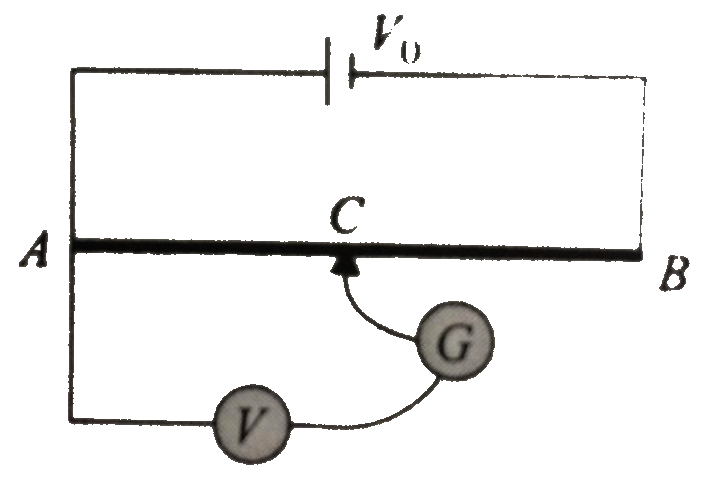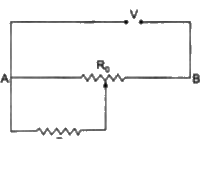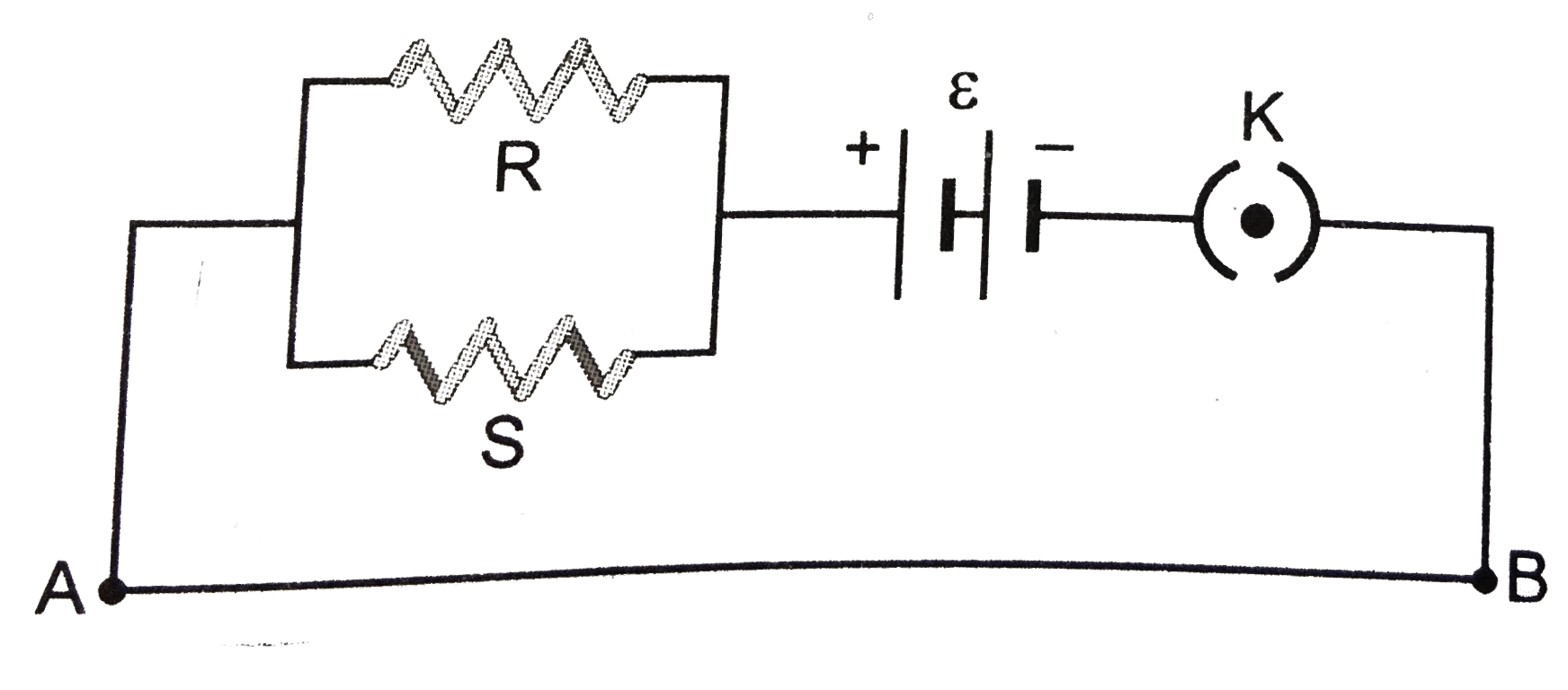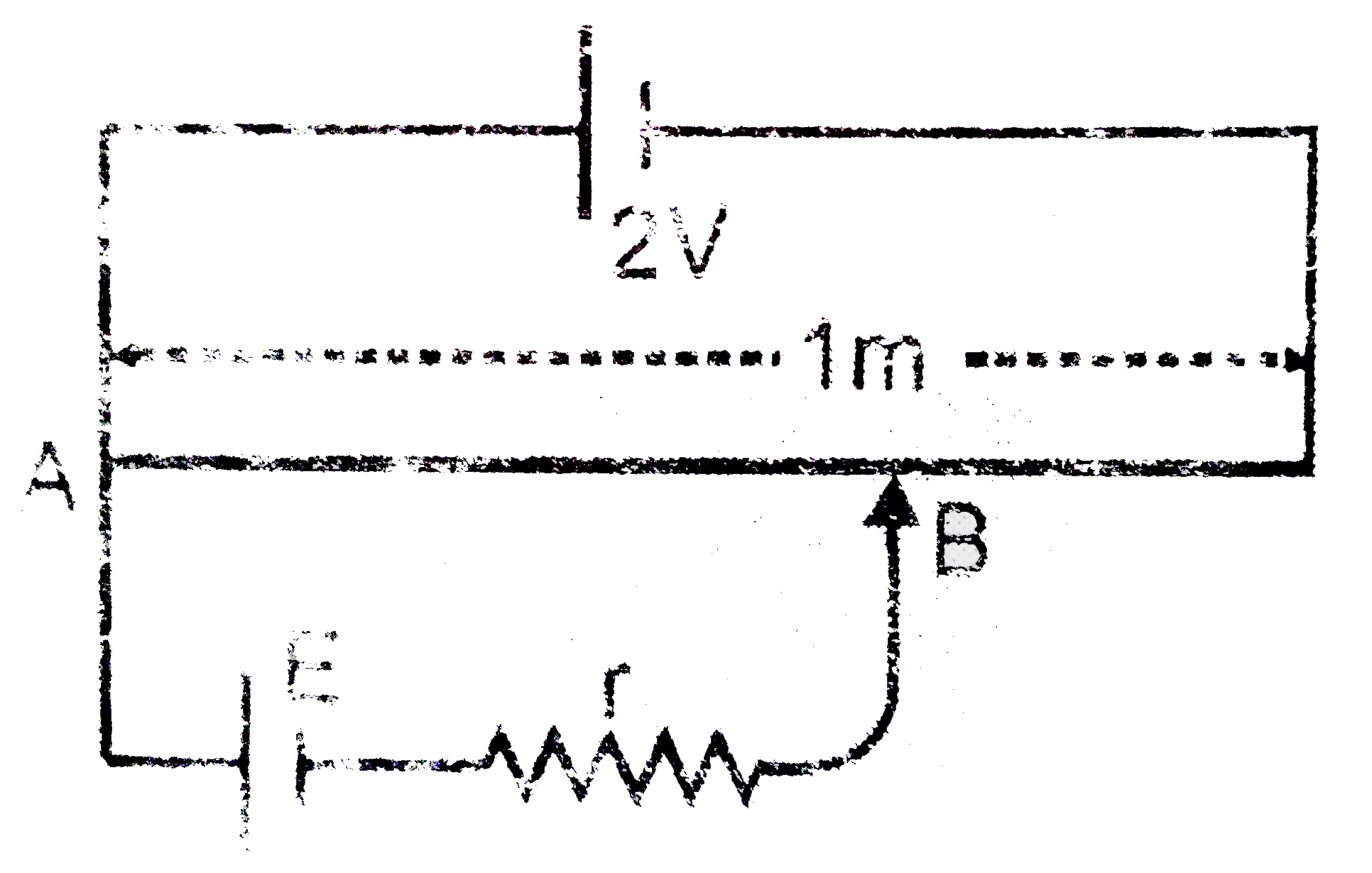
A constant voltage V0 is applied to a potentiometer of resistance R connected to an ammeter. A constant resistor r is connected to the sliding contact of the potentiometer and the fixed end of the potentiometer. How will the reading of ammeter vary as the sliding contact is moved from one end of the potentiometer to the other ? The resistance of ammeter is assumed to be negligible.
Let x : resistance of potentiometer between point a and sliding contact
Equivalent resistance between a and sliding contact =rxr+x
Total resistance of circuit =rxr+x+(R−x)

V1=rxr+xV0rxr+x+(R−x)=rxV0rR+Rx−x2
Current in ammeter
i1=V1x=V0rRx−x2+Rr
For i1 to be (maximum, minimum or constant)
di1dx=0⇒R−2x=0⇒x=R/2
At x=R/2,i1 is minimum.
Topper's Solved these Questions
Similar Questions
The given potentiometer has its wire of resistance 10Ω When the sliding contact is in the middle of the potentiometer wire, the potential drop across 2Ω resistor is :

View SolutionA voltage V0 is applied to a potentiometer whose sliding constant is exacly in tne middle. A voltmeter V is connected between the sliding constant and one fixed end of the potentionmeter. If is assumed that the resistance of the voltmeter is not very high in comparison to the resistance of the potentiometer wire. What voltage will the voltmeter show : higher than, less than, or equal to V0/2?

View Solution
Knowledge Check
The potentiometer wire of resistance R is connected in series with a cell of e.m.f. E and of resistance Rh. The current flowing through the potentiometer wire is
AI=ER+r+RhBI=ER+rCI=RERh+rDI=ERA 2 V battery, a 990Ω resistor and a potentiometer of 2 m length, all are connected in series of the resistance of potentiometer wire is 10Ω, then the potential gradient of the potentiometer wire is
A0.05Vm−1B0.5Vm−1C0.01Vm−1D0.1Vm−1In the given figure, battery E is balanced on 55 cm length of potentiometer wire but when a resistance of 10Ω is connected in parallel with the battery then it balances on 50 cm length of the potentiometer wire then internal resistance r of the battery is
 A1ΩB3ΩC10ΩD5Ω
A1ΩB3ΩC10ΩD5Ω
A resistance of R draw current from a potentiometer. The potentiometer wire, AB, has total resistance of R0. A voltage V is supplied to the potentiometer. Derive an expression for the voltage across R when the sliding contact is in the middle of potentiometer wire.

View SolutionA resistance of RΩ draws current from a potentiometer as shown in Fig. The potentiometer has a total resistance R0Ω. A voltage Vis supplied to the potentiometer. Derive an expression for the voltage across R when the sliding contact is in the middle of the potentiometer.

View SolutionA potentiometer wires has a length L and a resistance R0. It is connected to a battery and a parallel resistance combination of R and S as shown in fogure. Find an exprssion for the potential gradient of the potentiometer wire.

View SolutionPotentiometer wire of length 1m is connected in series with 490Ω resistance and 2V battery. If 0.2mVcm is the potential gradient, then resistance of the potentiameter wire is approximately
View SolutionIn fig. battery E is balanced on 55cm length of potentiometer wire but when a resistance of 10Ω is connected in parallel with the battery then it balances on 50cm length of the potentiometer wire then internal resistance r of the battery is:-

View Solution
